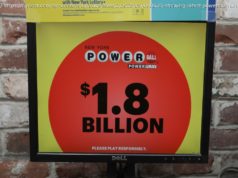Amtrak started the extensive repairs to tracks and signals in Penn Station. The work was initially scheduled for nights and weekends over a few years, but two recent derailments and other problems that spotlighted the station’s aging infrastructure convinced Amtrak to accelerate the work schedule.
NEW YORK — The rush hour commute into New York got off to a quiet start Monday as workers began two months of repairs at the country’s busiest train station, a project that Gov. Andrew Cuomo predicts will make for a “summer of hell.”
Amtrak started the extensive repairs to tracks and signals in Penn Station. The work was initially scheduled for nights and weekends over a few years, but two recent derailments and other problems that spotlighted the station’s aging infrastructure convinced Amtrak to accelerate the work schedule.
Monday morning’s rush began with no unusually large crowds and without any apparent major problems.
“So far, so good, ” said David Peter Alan, with the transit advocacy group the Lackawanna Coalition, said at NJ Transit’s Hoboken Terminal. “So far more smoothly than I expected. I expected a chaotic scene.”
He said that he was pleasantly surprised, but that the changes that diverted all of the trains on NJ Transit’s Morris and Essex Line were stretching Hoboken’s capacity to the limit. New Jersey Transit is diverting some rush hour trains to Hoboken, where passengers can switch to trains operated by the Port Authority of New York and New Jersey, or to ferries.
For several hundred thousand commuters on the Long Island Rail Road and New Jersey Transit — as well as Amtrak passengers who ride between Boston and Washington, DC — the Penn Station work means fewer trains during peak periods, the result of track closures to accommodate the repairs.
Penn Station, which Amtrak took over in the 1970s, handles twice as many daily train movements, about 1,300, as it did then. Roughly 600,000 people pass through each day on trains and New York City subways.
“We like to think it’s quiet because a lot of people did their homework, ” New Jersey Transit spokesman Charles Ingoglia said while standing outside the Hoboken train and ferry stations.
Ingoglia noted efforts his agency has made online and elsewhere to warn the public of the congestion that is expected when up to 16,000 commuters are added to the 23,000 people who usually flow through the Hoboken station each day.
While the commute had gone about as well as it could for most, the halls leading from NJ Transit trains to PATH trains were packed for over an hour and some people seemed bewildered at their new routine.
“A lot of confusion and too many people gathered in one space, ” said Lex Marshall, 35, of Morristown. “Everybody’s just bumping into each other, pushing each other to get to their destination.”
Service has been stepped up by trains, buses and ferries in anticipation of the busier commute. PATH trains were running every five minutes out of Hoboken rather than the usual seven-minute interval and additional NJ Transit buses were running from Hoboken to Manhattan as well.
The work is scheduled to last through the end of August.
Still, the real test for the “new normal” won’ t come until the weather, equipment problems or police activity somewhere along the train line interrupts service.
“The measure is how good are you when things are bad, ” Ingoglia said.
When this summer’s work is completed, rail riders will benefit from increased reliability from having up-to-date equipment in and around the station, but will still fall prey to other problems such as electrical wire failures in the tunnel between New York and New Jersey, and signal and track problems in northern New Jersey east of Newark.
Those problems will have to wait for the completion of the Gateway project, which plans to build a second rail tunnel under the Hudson River, repair damage in the existing tunnel from 2012’s Superstorm Sandy and make substantial improvements on the New Jersey side and in Penn Station.
That is expected to take at least another decade to complete, although federal funding for the project is in question after President Donald Trump proposed changing a federal grant program that was supposed to be used for it.






